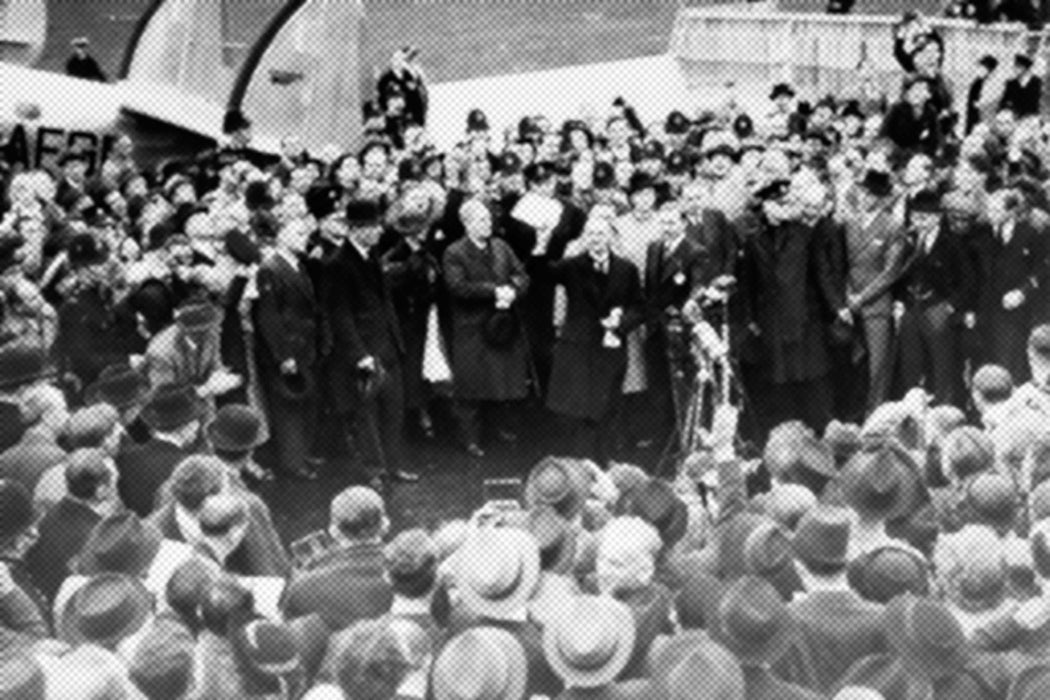On September 30th, 1938, the Munich Agreement was reached. It has since become synonymous with appeasement to tyranny. Of course, “appeasement” itself has become a dirty word in international relations, especially in the United States. Although the U.S. had nothing to do with the agreement between Britain, France, Italy, and Nazi Germany, “Munich” has nonetheless entered the American political lexicon. In the decades since, Munich has been used to justify the idea that tyranny must be met with force.
Around 1:30 a.m. on September 30th, 1938, Neville Chamberlain, Edouard Daladier, Benito Mussolini, and Adolf Hitler signed an agreement allowing Germany to annex the northwestern portion of Czechoslovakia. This region, called the Sudetenland, had a high proportion of German speakers. These Sudeten Germans had been made part of the new nation of Czechoslovakia at the breakup of the Austro-Hungarian empire in 1918. The Sudeten Crisis began in February 1938, when Hitler called for self-determination for Germans in Austria (which the Nazis annexed in March, 1938) and Czechoslovakia. There were no Czech representatives at Munich, but the country’s government reluctantly capitulated to the agreement.
Upon returning to London later that same September 30th, British Prime Minister Neville Chamberlain waved a copy of the peace treaty he and Hitler had signed on the side at Munich and said there would be “peace in our time.” Germany occupied the Sudetenland in October. In March of 1939, they took over the remaining Czech territory. In September 1939, the Nazis invaded Poland, throwing Europe into a murderous conflict for six years.
Political scientists Norrin M. Ripsman and Jack S. Levy note that the traditional view of Munich “condemned the British and French appeasement of Germany as politically naïve and morally bankrupt.” Before Munich, appeasement, which had been conventionally “defined as the satisfaction of grievances through unilateral concessions, with the aim of avoiding war,” had been an “honorable and effective strategy of statecraft.” Afterwards, “it came to symbolize naïveté, failed diplomacy, and the politics of cowardice.” Winston Churchill called the appeaser “one who feeds the crocodile, hoping it will eat him last.”
Get Our Newsletter
Ripsman and Levy want to rehabilitate the concept of appeasement as a tool of statecraft. They note it can be used for several purposes, including to “buy time to build up strength for deterrence or defense against the adversary.” They argue that this is what the British were up to. Chamberlain’s Conservative government knew they faced a growing Nazi threat. But they didn’t think they would win a war against Germany. They were buying time for rearmament, “thus delaying the likely confrontation until Britain was adequately prepared for war.” By 1939, British defense spending as a percentage of total government expenditures was 48%; in 1935 it had been 15%.
Ripsman and Levy suggest the literature of international relations hasn’t caught up with the historical literature. Since the 1960s-era declassification of British documents, appeasement has been understood by many historians quite differently: “not as the product of naïve idealists, but rather the consequences of poor intelligence, military weakness, multiple threats, and a fear of overtaxing the British economy through rapid wartime mobilization.”
Concluding that scholars need to “broaden the traditional conception of appeasement,” Ripsman and Levy also quote none other than Winston Churchill, addressing Parliament in 1950: “Appeasement in itself may be good or bad according to the circumstances. Appeasement from weakness and fear is alike futile and fatal. Appeasement from strength is magnanimous and noble and might be surest and perhaps the only path to world peace.”







